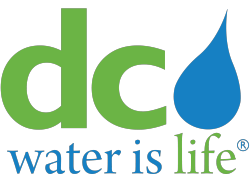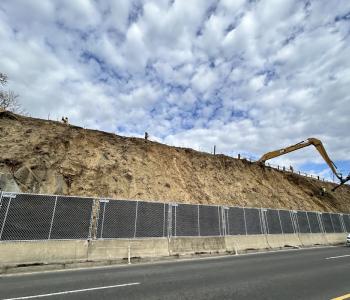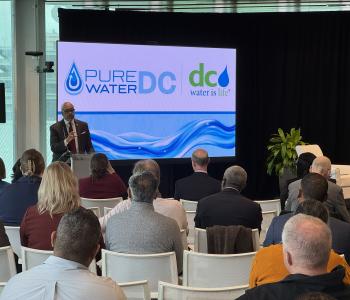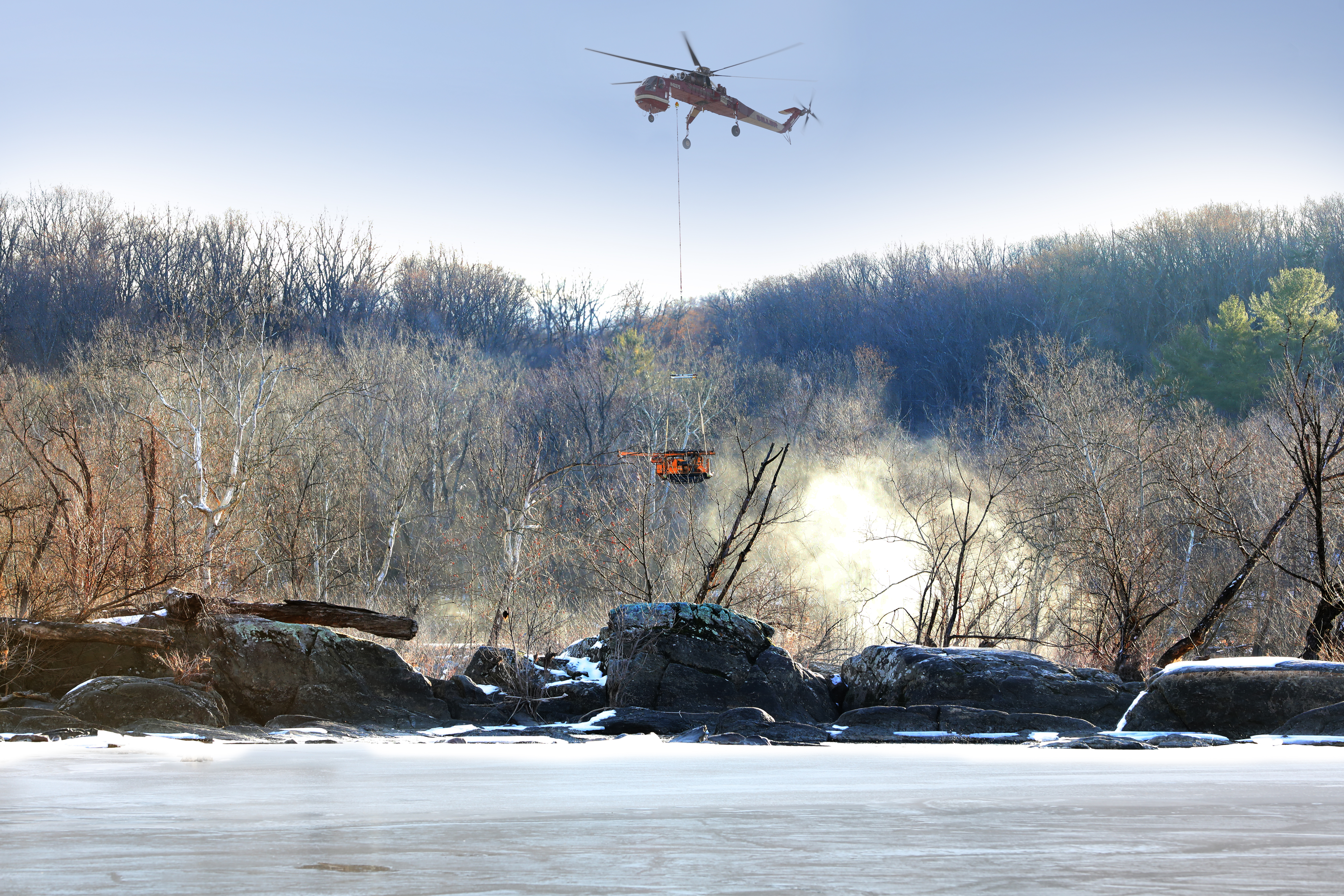WASA Board Intensifies Efforts to Protect Potomac River and Chesapeake Bay
The District of Columbia Water and Sewer Authority (WASA) Board of Directors has given the green light to two projects at the Blue Plains Advanced Wastewater Treatment Plant that will have a significant impact on WASAs ongoing program to reduce nitrogen levels discharged from the sewage treatment plant into the Potomac River, a tributary of the Chesapeake Bay. Nitrogen is a key pollutant that causes the depletion of oxygen that fish and other aquatic life need to thrive.
The boards action today approves a $101 million construction contract to replace, rehabilitate and upgrade facilities at Blue Plains to continue the 40 percent reduction levels that WASA has voluntarily achieved. The board also authorized the general manager to submit a plan, estimated to cost more than $800 million, to further reduce nitrogen levels to meet the new limit set by the U.S. Environmental Protection Agency (EPA) in its modification of the Blue Plains operating permit. The new permit limit requires a reduction of total nitrogen (TN) from the plant from 8.5 million pounds per year to 4.7 million pounds per year. The cost will be shared between the District rate payers and the Authoritys suburban wastewater treatment customers in Maryland and Virginia.
After months of discussions by the board, meetings with stakeholders and other regional interests, and negotiations with EPA, the board has embraced a conceptual plan that is very aggressive and very expensive, General Manager Jerry N. Johnson said.
The Blue Plains wastewater plant, the largest single point source discharger to the Chesapeake Bay, treats an average 370 millions of gallons per day and has been a leader in voluntarily reducing nutrient (nitrogen and phosphorus) discharge. WASA has reduced nitrogen levels by 75 percent since 1987, far exceeding goals established by the Chesapeake Bay Agreement in 1987 and 2000. Since 2000, WASA has met its voluntary goal of 7.5 million pounds of TN per year and, for the past two years, through research and related improved operations, has averaged less that 5.5 million pounds per year.
In terms of the effort and money spent on protecting and cleaning up the Potomac and Anacostia rivers and the Chesapeake Bay estuary, we are true environmental stewards, making a significant investment in resolving longstanding problems, Johnson said.
Johnson further referenced the 2005 Chesapeake Bay Commission Report which documents that less than 26 percent of the Bays nitrogen is due to discharges from municipal wastewater treatment plants. It is clear that reduction in other sources of nitrogen -- agriculture, animal waste, fertilizers, and the atmosphere has to be addressed if the Bay restoration program is to succeed. It cant all be done on the backs of the municipalities, he said.
WASA will submit its proposed reduction strategy to EPA Region III by April 16, 2007. WASA will also submit the plan to the environmental organizations that commented on the draft permit. The implementation schedule for the proposed plan will be established through continuing discussions with EPA.







